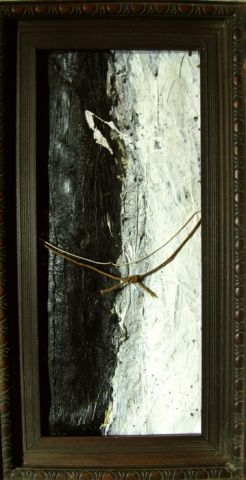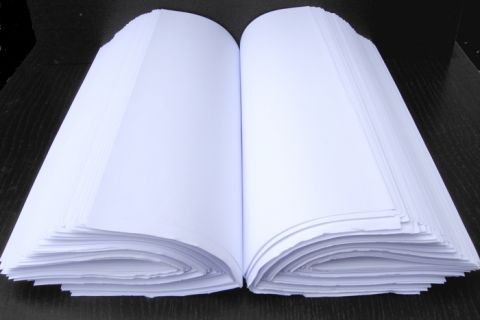In response to David Minton’s question on my post #19
A great question David, and straight to the heart of the matter! He asks, ‘How does the work that you make engage the description that you give to it?’ That is precisely what I am trying to find out if I do successfully. Let me try and answer on two levels, first in regards to title, because the title is a sort of description for me and second in terms of theory.
I like short, concise, preferably one word titles. I like them because I want to hint at my meaning for the work without confounding a viewer with a long title that may interfere with their own reading of the work. I often find a title as I work and it is often a very intuitive thing; simply, something will occur to me. If that doesn’t happen, I consider the work until something comes. In either case, I question then if the title relates to the work, to the concept/theory and does it help to bring the work and theory together. I have to feel that it does all those things before I keep the title.
I’ve been told, ‘the theory comes from the work; don’t try to make your work fit theory!’ Sorry, but I don’t work that way. I do agree that trying to make work according to a rigid set of theory rules could be very confining (although, I don’t think Mondrian found it so), and work made from theory risks becoming contrived. But for me having theory circling in my head as I enter the studio arms me for battle, so to speak. When I enter the studio and confront the white, all of the things I’ve been studying and reading go with me. I never confront the white unarmed.
But have I been successful? Does the work I make engage the description I give to it?
Well, one of the ways it engages the description is perhaps through what I could call ‘the mirror element’ or ‘duality’ as I said originally in post #19. Two similar elements suggest a split or confrontation and as I’m working with the concept of the impossibility of the self to fully identify with itself, this seems fitting. There are also disembodied fragments or features in my work which could suggest this limitation of identity.
I also explore the paradoxical idea that context defines and obliterates the self (or the identity of the self, if you like). I think this may be visible by the imperfect and chance occurrences which happen in my work, areas of collision and by the use of gesture itself. The gestures in my work are not heroic; they are gestures of transience – fleeting, momentary, and tentative. There is an identity behind the gestures, making the gestures, but this self isn’t given full allowance to state or stake its presence. It is an interrupted identity.
Sean Burke’s ‘The Death and Return of the Author’ has influenced my concepts of the self a lot. It boils down to the fact that even if an author or artist removes their voice or themselves from a work, very much as Burgin does in his conceptual pieces, the audience still takes their direction from the ‘voice’ in the piece, reading it as the voice of the artist. So the author/artist can never fully remove himself from the perception of his presence by the viewer. My use of gesture is the ‘return of the artist’ in the notion of the self and the post-structural effort to kill off the self (as in death of the author). Likewise, I don’t use gesture in the way the Abstract Expressionists used it; a sort of ‘I am man hear me roar!’ My gesture knows it hasn’t got long to state its case. I think that feeling of movement, transience and perhaps even agitation is visible.
I hope that has answered your question, David, because, man was that hard!




